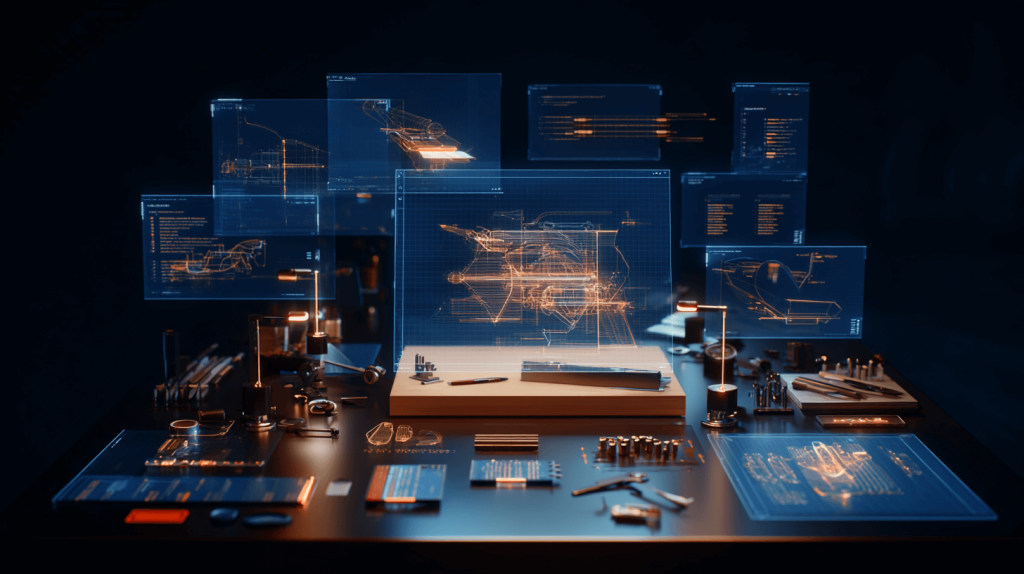You’ve spent months perfecting your invention. The prototype works flawlessly. Early feedback is overwhelmingly positive. You know you have a great idea that a patent could protect. Now comes the moment every inventor dreads: staring at patent attorney quotes ranging from $8,000 to $15,000 while wondering if you could just handle the filing yourself.
While some inventors attempt to write and file their own patents, most individuals who try to handle their own patents face significant risks of invalidation due to a lack of professional expertise.
After all, the USPTO’s Patent Center makes electronic submission seem straightforward, and you’re no stranger to complex technical documents. How hard could it really be to describe your own invention and file some paperwork?
Here’s what most inventors discover too late: approximately 76% of self-filed patents are abandoned. What initially appears as a cost-saving shortcut often becomes an expensive detour that costs far more than the attorney fees you tried to avoid while leaving your invention completely unprotected.
This guide delves into the intricate details of patent filing and explains why professional expertise isn’t just recommended—it’s essential for securing adequate patent protection.
Understanding Your Patent Filing Options
The United States Patent and Trademark Office does permit inventors to file patent applications without legal representation. These self-represented applicants, commonly referred to as “pro se” filers, can submit their applications through the electronic Patent Center system.
The USPTO offers three types of patent protection:
- Utility patents: Protect new and useful processes, machines, compositions of matter, or improvements thereof (most common and complex).
- Design patents: Protect ornamental designs and visual appearance. A design patent protects the ornamental appearance of an article of manufacture, distinguishing it from utility patents, which cover functional aspects.
- Plant patents: Cover new varieties of plants that can be reproduced asexually
Notably, a majority of non-provisional patent applications are filed with registered patent practitioners, meaning only a fraction are truly pro se filings. Even in highly technical fields where inventors possess deep expertise, the vast majority opt for professional representation despite having the option to self-file.
The USPTO explicitly warns that unless you are deeply familiar with patent law and procedures, you are likely to face “considerable difficulty” going it alone, with no assurance that any patent obtained would adequately protect the invention.
The Apparent Benefits
The primary motivation for DIY patent filing is cost avoidance. With attorney fees ranging from $5,000 to $15,000 for utility patent preparation and filing, compared to USPTO filing fees starting around $730 for small entities, the savings appear substantial. Submitting your own patent application is often seen as a more affordable option for inventors who want to minimize expenses.
Additional perceived benefits include:
- Complete control over timing and content.
- Direct communication with the patent office.
- Learning about the patent system firsthand.
- Avoiding dependency on external counsel.
However, these supposed “benefits” often evaporate in practice. Having complete control means bearing full responsibility for costly mistakes. While you can communicate directly with patent examiners, you must craft compelling legal arguments without training. The learning experience often becomes an expensive lesson in why patent law requires specialized expertise.
USPTO Support Resources
The USPTO provides several resources for pro se applicants:
- Pro Se Assistance Program: Offers basic procedural guidance but cannot provide legal advice or strategy.
- Patent and Trademark Resource Centers (PTRCs) provide access to research tools, educational materials, and expert library staff.
- Online educational modules: Cover basic patent concepts and filing procedures.
- USPTO website: Contains forms, fee schedules, and procedural information.
These resources can help applicants understand the examination process and the procedural steps involved in reviewing patent applications.
In 2024, the USPTO launched a pilot “welcome letter” program aimed at first-time pro se applicants, encouraging them to utilize examiner interviews and persist through rejections. This initiative was spurred by internal data showing that pro se, under-resourced, and first-time inventors are more likely to abandon their applications early.
While these resources help with procedural compliance, they focus on mechanics rather than substantive patent strategy—the areas where most DIY applications fail.
The Hidden Complexity of Patent Prosecution
The Learning Curve Problem
What many inventors don’t realize is the steep learning curve that even trained professionals face when entering patent law. Professional patent training programs emphasize that patent prosecution involves “extremely complex and nuanced aspects” that require years of specialized education and hands-on experience. Patent attorneys describe the profession as having a “steep learning curve,” even with formal mentorship and structured training programs.
Becoming a patent attorney typically requires seven years of full-time study after high school, consisting of four years of undergraduate study followed by three years of law school. Even then, major law firms offer comprehensive, multi-year training programs for new patent attorneys, which include one-on-one mentoring, specialized classes, and hands-on experience under the supervision of experienced professionals. This extensive preparation is necessary because patent law combines complex legal principles with a deep technical understanding.
The Examiner Mindset Gap
Patent examiners themselves undergo extensive training that many inventors may not appreciate. New patent examiners begin with a four-month residency in the Patent Training Academy, followed by continued individualized on-the-job training from supervisors and senior examiner mentors throughout their first year.
Even with this training, the USPTO actively seeks guest lecturers from industry and academia to provide patent examiners with ongoing technical training on emerging technologies, state-of-the-art developments, and industry practices. This continuous education system exists because patent examination requires both legal expertise and deep technical knowledge that must constantly evolve in response to technological advancements.
Pro se inventors attempt to navigate this system without understanding the examiner’s perspective or training. They often misinterpret office actions, provide inadequate responses, and fail to communicate in the precise legal language that examiners expect. This communication gap contributes significantly to the high failure rates of DIY applications.
The Reality of DIY Patent Risks
Staggering Failure Rates
The statistics paint a sobering picture. Research analyzing 500 patent filings found that 76% of pro se applications never resulted in a patent, compared to 35% for professionally represented applications. Among the small fraction of pro se patents that were approved, the claims were significantly narrower, offering much weaker protection compared to attorney-drafted patents. Obtaining an issued patent from the USPTO involves filing a patent application, responding to office actions, and paying various fees, which can add up to significant costs before a patent is officially granted.
Why Professional Patents Outperform DIY Attempts
Patent applications filed by registered attorneys or agents show dramatically better outcomes across multiple metrics:
Higher Grant Rates: Professionally drafted applications are roughly 2-3 times more likely to be approved by the USPTO. Professionals anticipate examiner objections and frame inventions to meet legal requirements. Patent lawyers, with their expertise in drafting strong claims and ensuring legal compliance, significantly increase the likelihood of patent approval.
Stronger Claim Scope: Independent claims in pro se patents averaged 263 words compared to 182 words for attorney-drafted patents. Longer claims typically contain more limitations, making them easier for competitors to design around.
Better Survival in Litigation: Patents with explicit, well-supported claims withstand legal challenges far better than those with sloppy drafting. Patent infringement litigation can cost over $2 million in legal fees just to reach judgment, so investors won’t pursue enforcement unless the patents are rock-solid.
Higher Licensing Success: Further analysis reveals that the top 5% to 10% of patents often contribute over half of the total economic value in a portfolio.. Professional help dramatically increases the odds that your patent falls into that valuable tier.
The Complexity Behind Simple Forms
While the Patent Center makes filing mechanically simple, the intellectual challenge lies in what you’re filing. A patent application must satisfy numerous requirements under federal law:
- Novelty (35 U.S.C. §102): The invention must be new compared to all prior art.
- Non-obviousness (35 U.S.C. §103): The invention must represent a sufficient advance over existing technology.
- Utility (35 U.S.C. §101): The invention must have a practical application. Patent protection cannot be granted for abstract ideas, laws of nature, or physical phenomena.
- Enablement (35 U.S.C. §112(a)): The description must teach others how to make and use the invention.
- Written Description (35 U.S.C. §112(a)): The specification must demonstrate possession of the claimed invention.
Most inventors focus on describing their invention but fail to craft legally sufficient claims or adequately address these substantive requirements. As the USPTO guidance states, preparing a patent application “requires knowledge of patent law and USPTO procedures,” and even if a novice manages to get a patent issued, there’s “no assurance that the patent obtained would adequately protect the invention.”
Critical Mistakes That Doom Self-Filed Patents
Inadequate Prior Art Searching
A comprehensive prior art search is a critical step in the patent process. Professional patent searching requires access to specialized databases and years of experience in search strategy. The USPTO encourages inventors to seek expert search assistance, noting that an inventor’s own search “may not be as complete as one made by the USPTO.”
Most inventors conduct only basic searches, missing critical prior art that patent examiners will inevitably discover. The consequences are severe:
- Wasted effort on unpatentable ideas: Missing prior art can lead to filing applications for already-invented concepts.
- Broader claims rejected: Unknown prior art forces dramatic claim narrowing during the examination.
- Invalidated patents: Missing prior art can later be used to invalidate issued patents in litigation or post-grant proceedings.
Professional searchers use multiple databases, classification-based searches, foreign language queries, and non-patent literature sources that typical inventors never access. Reviewing technical journals is also essential, as these publications often contain relevant prior art not found in patent databases.
Poor Claim Drafting
Patent claims define the exact scope of protection and represent the most legally demanding aspect of any patent application. Research shows that pro se patents had fewer claims on average than professionally drafted ones, indicating inadequate coverage of potential variations.
Common claim drafting errors include:
- Overly narrow claims: Claims so specific that competitors can easily design around them.
- Overly broad claims: Claims that encompass prior art and are easily invalidated.
- Indefinite language: Vague terms that fail to define the invention’s boundaries clearly.
- Inadequate claim support: Claims are not adequately supported by the detailed description.
Additionally, claims must meet the non-obvious standard to be patentable, meaning the invention should not be obvious to a person having ordinary skill in the art before the filing date.
Patent attorneys spend years learning to draft claims that maximize protection while satisfying legal requirements—skills that cannot be acquired through online tutorials.
Specification Writing Failures
The patent specification must provide a complete description of the invention. Pro se applications were far more likely to receive formal notices from the USPTO for missing or non-compliant content. Common failures include:
- Lack of detail: Insufficient information to satisfy enablement requirements.
- Poor organization: Missing required sections or improperly formatted content.
- Internal inconsistency: Inconsistent naming or reference numeral mix-ups.
- No support for claims: Specifications that don’t provide a basis for potential claim amendments.
Timing and Procedural Errors
Patent law includes numerous unforgiving deadlines:
- One-year bar: Public disclosure more than one year before filing renders a patent unpatentable.
- Provisional filing deadlines: Missing the 12-month window to file a non-provisional application.
- Foreign filing deadlines: Missing PCT or direct foreign filing windows permanently forecloses international protection.
- Office action responses: Inadequate responses to patent examiner rejections.
Establishing a filing date through your initial patent application is crucial, as it determines your patent priority and protects your invention against later filings by others.
Statistics show that around 40% of provisional applications are abandoned without being followed by a non-provisional application, often because inventors are not aware of the requirements.
Why 90% of Self-Filed Patents Are Rejected or Abandoned
Common Office Action Issues
Patent examiners routinely issue office actions challenging pro se applications on multiple grounds:
- Prior art rejections: Citations of earlier patents that anticipate or render obvious the claimed invention. It is crucial to distinguish your invention from other inventions identified during the patent search to establish novelty and patentability.
- Indefiniteness rejections: Pro se applications have a much higher incidence of §112 rejections compared to professionally prepared ones.
- Enablement rejections: Findings that specifications don’t adequately teach how to make or use the invention.
- Formal objections: Issues with drawings, abstracts, or claim formatting.
- 35 U.S.C. § 101 rejections: How to overcome subject matter eligibility issues and 101 rejections.
The Response Challenge
Successfully responding to office actions requires legal expertise that most inventors lack:
- Inadequate claim amendments: Amendments that don’t overcome rejections or unnecessarily narrow claims.
- Poor legal argumentation: Responses lacking specific legal standards for patentability.
- Failure to address all issues: Missing grounds of rejection in responses.
- Strategic errors: Damaging admissions that limit future claim interpretation.
Pro se applicants utilize examiner interviews at roughly half the rate of represented applicants, missing opportunities to resolve issues cooperatively.
Final Rejections and Abandonment
When applicants are unable to respond adequately to office actions, examiners issue final rejections. At this point, options become limited and expensive:
- Request for Continued Examination (RCE): Costs $1,360 or more for small entities.
- Appeals to Patent Trial and Appeal Board: Complex legal proceedings beyond most inventors’ capabilities.
- Abandonment: Many pro se applicants simply give up rather than invest more money.
USPTO data show that represented applicants use RCEs far more strategically, whereas pro se applicants often abandon their applications at the final rejection stage.
The Professional Patent Attorney Advantage
Strategic Issue Identification
Experienced patent attorneys identify potential problems before they become fatal flaws:
- Patentable subject matter assessment: Recognizing issues that could doom applications.
- Prior art landscape analysis: Understanding competitive positions before filing.
- Disclosure evaluation: Ensuring specifications meet legal requirements.
- Business goal alignment: Tailoring strategy to commercialization objectives.
Working with a registered patent agent can further improve the quality and enforceability of your patent by leveraging their specialized legal and technical expertise in drafting and filing applications.
Sophisticated Claim Strategy
Professional claim drafting involves multiple strategic considerations:
- Multiple independent claims: Various approaches to capture different aspects of inventions.
- Careful dependency chains: Fallback positions if broader claims are rejected.
- Optimal terminology: Language that maximizes coverage while avoiding prior art.
- Design-around prevention: Claiming variants to prevent easy circumvention.
Prosecution Expertise
During the examination, patent attorneys provide crucial advantages:
- Effective examiner communication: Professional responses addressing legal standards.
- Strategic amendments: Overcoming rejections without unnecessarily limiting scope.
- Interview utilization: Productive discussions to resolve misunderstandings.
- Appeal knowledge: Understanding when and how to challenge examiner decisions.
Hiring a patent lawyer is especially beneficial for inventors facing complex legal issues, broad prior art, or when the invention’s commercial value justifies expert guidance through the patent process.
The Economics of Patent Value Distribution
Understanding the Patent Value Pyramid
Recent industry data reveals the stark reality of patent value distribution. A broad analysis by DataHorizzon Research indicates that the global intellectual property licensing market—which includes patents, trademarks, copyrights, and trade secrets—was valued at approximately $340 billion in 2024 and is anticipated to reach $580 billion by 2033, exhibiting a compound annual growth rate (CAGR) of 6.1% from 2025 to 2033. However, this massive market value is highly concentrated among a small percentage of patents.Global Intellectual Property Licensing Market Size, Growth, Share, & Analysis Report – 2033
Patent licensing royalty rates typically range from 0.1% to 25% of net sales or profits, with significant variations across different industries. The rate depends on various factors, including the strength and scope of the patent, the competitive landscape, regulatory considerations, and industry growth trends. Importantly, companies must carefully structure licensing terms and conduct regular IP audits to maximize patent value, as successful licensing requires building long-term partnerships and providing ongoing support to licensees.
The concentration of value becomes clear when examining patent ownership. Samsung Electronics led U.S. patent grants in 2023, with 6,165 patents, while the United States granted 174,820 patents domestically. Japan followed with 40,785 patents.
This reflects how established companies with professional patent strategies dominate the valuable patent landscape.
Pro se inventors entering this market face overwhelming disadvantages. Their patents typically lack the broad scope, technical precision, and strategic positioning necessary to compete for licensing opportunities. Even if granted, DIY patents usually fall into the bottom tier of patent value distribution, generating no meaningful commercial returns.
The International Patent Strategy Imperative
Global Market Realities
Most inventors severely underestimate the complexity and importance of international patent strategy. Under the Paris Convention, patent applicants have only 12 months from their first filing to file foreign applications, claiming priority to their initial filing. In contrast, the Patent Cooperation Treaty (PCT) allows applicants to extend this deadline to 30 months from the priority date.
Professional patent strategies recognize that when seeking international patent rights, it’s typically wise to draft applications that are appropriate for both the United States and China, as these countries have among the most stringent disclosure requirements.
Pro se inventors often lack an understanding of these international complexities. They miss critical deadlines, fail to coordinate filings properly, and frequently discover too late that their domestic patent provides no protection in major global markets. Professional patent attorneys routinely manage these international strategies, ensuring inventors don’t forfeit valuable foreign rights through procedural mistakes or poor timing.
The Quality Control Factor: What Professional Oversight Provides
Systematic Error Prevention
Professional patent firms implement sophisticated quality control systems that dwarf any individual inventor’s capability to self-review. The USPTO operates an extensive Patent Quality Assurance program, overseen by Review Quality Assurance Specialists who are experienced Primary Patent Examiners, and is governed by an ISO 9001:2008-certified quality management system.
The USPTO measures patent examination quality using seven composite feature metrics, including the Final Disposition Compliance Rate and In-Progress Compliance Rate, as well as multi-factor reviews that assess omitted rejections and the reasonableness and clarity of rejections on a per-claim basis. Their statutory compliance metrics require that if any single claim has an improper determination under any statute, the entire Office action is identified as non-compliant, regardless of the number of proper decisions made.
Professional patent firms apply similar rigor. Patent attorneys use automated patent proofreading tools at all stages of preparation and prosecution, with a review by a second patent attorney to improve all aspects of patent quality. Companies spend considerable sums developing patent portfolios, making quality control essential, as legal errors in patents can potentially result in patent owners losing the necessary rights to their innovations.
Despite these extensive quality control measures, government audits have found that the USPTO’s quality metrics may underrepresent accurate error rates, and patent quality remains a subject of ongoing debate and reform efforts. This reality highlights the significant challenges of patent quality control, even for highly trained professionals with sophisticated systems.
Pro se inventors have no comparable quality control infrastructure. They lack the expertise to recognize potential errors, the tools to systematically check their work, and the experience to anticipate common pitfalls. What appears to be a reasonable patent application to an untrained inventor often contains fundamental flaws that doom it during examination or litigation.
The True Cost of DIY Patent Mistakes
Lost Commercial Opportunities
Only relatively few patents are worth significant amounts—roughly the top 5% to 10% of patents often contribute over half of the total economic value in a portfolio. Patents with weak or invalid claims cannot support successful licensing or commercialization strategies. Patented inventions receive legal protection and proprietary rights, which are essential for securing ownership and establishing exclusivity in the market. Companies evaluating patent portfolios for acquisition routinely dismiss poorly drafted patents as providing insufficient protection to justify investment.
Enforcement Impossibility
Patent infringement litigation requires strong, well-drafted claims that can withstand challenges to their validity and scrutiny. Patents that aren’t strong enough to enforce have no reliably measurable economic value. Self-filed patents often fail in litigation due to the following:
- Validity challenges: Missing prior art or drafting flaws exploited by defendants.
- Narrow claims: Insufficient scope to catch competitor products.
- Cost barriers: Inability to attract contingency-based litigation due to weak patents.
International Rights Forfeiture
Missing 12-month foreign filing deadlines permanently foreclose protection in significant markets. Many inventors discover too late that patent protection requires international coordination within specific timeframes.
Opportunity Cost Analysis
DIY Patent Attempt:
- USPTO filing fees: ~$1,500 total.
- Time investment: 100-200 hours.
- Success probability: ~10%.
- Commercial value if successful: Minimal.
Professional Patent Application:
- Attorney fees: $8,000-15,000.
- USPTO fees: ~$1,500.
- Time investment: 20-40 hours.
- Success probability: 60-80%.
- Commercial value, if successful: Substantial.
The math clearly favors professional preparation when factoring in success probabilities and commercial outcomes.
USPTO Filing Requirements and Fees for 2024
Current Fee Structure
For small entities (individual inventors, small businesses), basic USPTO fees include:
- Filing fee: ~$70 (with electronic filing discount).
- Search fee: $320.
- Examination fee: $320.
- Total minimum: ~$730.
After your patent application is approved, an issue fee must be paid as a final step before the patent is granted.
Micro entities receive an 80% fee reduction, while large entities pay the full fees.
Additional Fees That Accumulate
- Excess claim fees: $80 per claim over 20 total, $240 per independent claim over 3.
- Extension fees: $200-$1,400 for delayed responses.
- RCE fees: $1,360 for the first RCE (increasing to $1,500 in 2025).
- Appeal fees: ~$2,360 total for small entities.
Congress enacted penalties in 2023 for false certification of small or micro entity status, with fines of at least three times the underpaid fees.
When Professional Patent Representation is Essential
The Reality: While the USPTO permits self-filing, the evidence overwhelmingly demonstrates that professional representation is essential for virtually all patent applications. The 76% abandonment rate for DIY applications and negligible commercial value of most granted pro se patents make professional guidance not just recommended—but necessary for meaningful protection.
Why “Budget Constraints” Don’t Justify DIY Filing: Even in limited-budget situations, the true cost analysis favors professional representation:
- DIY attempt: ~$1,500 USPTO fees + 100-200 hours + 90% failure rate = expensive lesson
- Professional filing: $8,000-15,000 + ~$1,500 fees + 60-80% success rate = actual protection
Your Best Alternatives to Going It Alone:
- Consult with an experienced patent attorney first – Professional evaluation prevents costly mistakes and identifies the most strategic approach for your specific invention and budget
- Provisional patent applications with professional guidance – Lower upfront cost while securing filing date and developing comprehensive strategy with attorney oversight
- Patent Pro Bono Program – Free representation for qualifying low-income inventors through organized legal assistance
- Law school clinic assistance – Supervised student help under experienced attorney guidance at reduced cost
- Phased professional assistance – Strategic consultation on critical aspects like prior art analysis and claim drafting where mistakes are most costly
The Bottom Line: The question isn’t whether you can afford professional help—it’s whether you can afford not to have it. The investment in experienced patent counsel typically pays for itself through improved outcomes and avoidance of unfixable mistakes that DIY filing almost inevitably creates.
Your Next Steps to Patent Protection Success
The decision you make about patent representation today determines whether your invention receives meaningful protection or becomes another statistic. Understanding the complexity of patent law and the risks of self-filing gives you the foundation to make an informed choice about protecting your most valuable innovations.
Time-Sensitive Reality: In our first-to-file system, competitors are already working on similar innovations. Every day without proper patent filing strategy potentially hands your competitive advantage to rivals.
Your Immediate Action Steps:
- Schedule a Free Patent Strategy Call – Get professional evaluation of your invention’s patentability and develop a strategic filing plan that maximizes protection while minimizing risks
- Conduct comprehensive prior art searches using professional databases and classification systems
- Document your invention thoroughly with detailed technical specifications and development records
- Assess international filing opportunities and coordinate PCT strategy within critical deadlines
- Consult with experienced patent attorneys who understand both the technical complexity and business implications of your innovation
- Evaluate provisional vs. non-provisional filing strategies based on your commercial timeline and budget
Looking Forward: Patent law continues evolving with new examination guidelines and technological developments. The investment in proper patent preparation today positions your invention for future opportunities in licensing, enforcement, and commercialization that weak DIY applications cannot support.
The RLG Guarantee for Prior Art Searches and Provisional Patent Applications:
For Patentability Searches: We’re so confident in our comprehensive prior art analysis that if our search finds your invention is not novel, we’ll issue a 100% refund. Get professional patentability assessment with full refund or another search if patentability issues are uncovered (your choice).
For Provisional Patent Applications: Our experienced US patent attorneys lead your provisional application from start to finish with one transparent flat-fee covering the entire process. Full refund if USPTO denies your provisional patent application.
Ready to secure patent protection that actually protects? The statistics are clear: professional representation dramatically increases your chances of obtaining valuable patent rights. Don’t let your breakthrough innovation become another abandoned application statistic. Contact our experienced IP team to develop a patent strategy engineered to withstand scrutiny and deter competitors from using your innovations as roadmaps against you.




